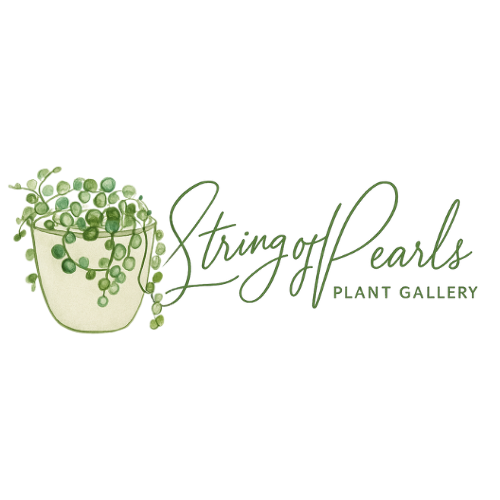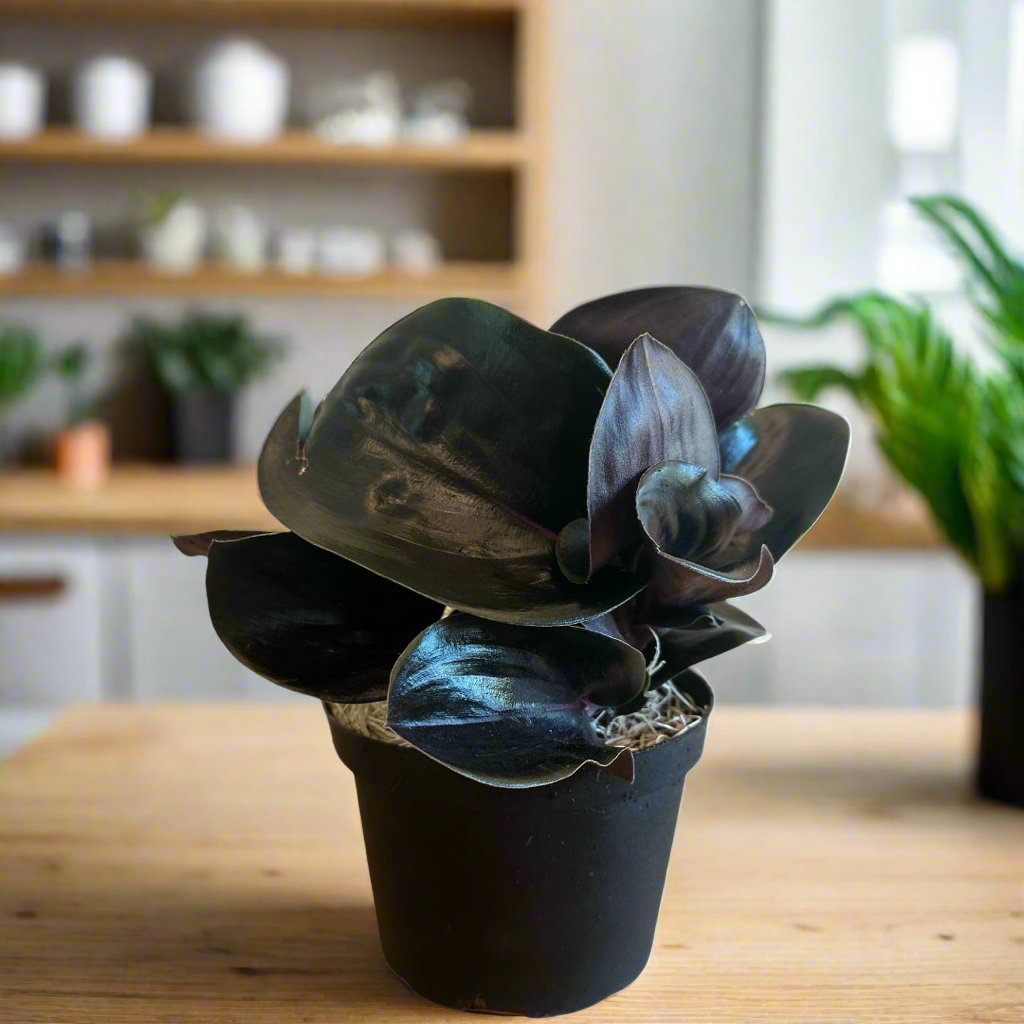The Geogenanthus ciliatus, often referred to as the "Geo plant," is a stunning and unique addition to any indoor plant collection. Known for its glossy, dark green to almost black leaves with a velvety texture, this plant adds a sense of drama and elegance to your space. Native to the rainforests of Central and South America, the Geogenanthus ciliatus thrives in warm, humid environments, making it an excellent choice for terrariums or well-lit rooms with consistent moisture. Below, we provide a comprehensive guide to care for this captivating plant, including tips for acclimation after shipping and exposure to cold weather.
Care Instructions
Light
The Geogenanthus ciliatus prefers bright, indirect light. Too much direct sunlight can scorch its delicate leaves, while low light conditions may hinder its growth and dull its vibrant foliage. Place it near an east-facing window or use sheer curtains to diffuse sunlight from a south-facing window.
Watering
This plant thrives in consistently moist soil but does not tolerate standing water. Allow the top inch of the soil to dry out before watering. Use room-temperature, filtered water or rainwater to avoid mineral buildup, which can harm the plant over time.
Humidity
As a tropical plant, Geogenanthus ciliatus loves high humidity levels, ideally between 60% and 80%. Use a humidifier, group it with other plants, or place it on a pebble tray with water to maintain the desired humidity.
Temperature
The ideal temperature range for Geogenanthus ciliatus is between 65°F and 80°F (18°C to 27°C). Avoid exposing it to drafts, sudden temperature changes, or temperatures below 60°F (15°C).
Soil
Plant it in a well-draining, peat-based soil mix. A blend of potting soil, perlite, and orchid bark works well to ensure aeration and proper drainage.
Fertilizer
Feed your Geogenanthus ciliatus with a balanced, water-soluble fertilizer every 4-6 weeks during the growing season (spring and summer). Reduce feeding in the fall and winter when the plant enters dormancy.
Pruning and Maintenance
Remove any yellowing or damaged leaves to keep the plant healthy and attractive. Clean the leaves regularly with a damp cloth to remove dust and enhance their natural luster.
Acclimation Instructions
After Shipping
Receiving plants through the mail can be stressful for them. Follow these steps to help your Geogenanthus ciliatus adjust:
-
Inspect the Plant: Upon arrival, carefully remove the packaging and check for any signs of damage or pests. Trim any leaves that appear damaged or yellowed.
-
Rehydrate: If the soil feels dry, give the plant a thorough watering. Ensure the pot has proper drainage to prevent waterlogging.
-
Gradual Light Exposure: Place the plant in a shaded area for the first 2-3 days to allow it to recover from transit stress. Gradually move it to its preferred location with bright, indirect light.
-
Monitor Humidity: Increase humidity levels using a humidifier or pebble tray. Shipping often causes the plant to dry out, so maintaining high humidity will help it recover.
-
Avoid Immediate Repotting: Unless the plant is root-bound or the soil condition is poor, wait at least 2 weeks before repotting to minimize additional stress.
After Cold Weather Exposure
If your Geogenanthus ciliatus has been exposed to cold weather during transit, extra care is required:
-
Gradual Warm-Up: Place the plant in a warm, draft-free area immediately upon arrival. Avoid placing it near heating vents, as sudden temperature changes can worsen damage.
-
Inspect for Frost Damage: Check for mushy, discolored, or wilted leaves and remove them gently with clean scissors.
-
Hydrate Carefully: Cold exposure may slow water absorption. Water the plant sparingly at first, ensuring the soil is moist but not soggy.
-
Boost Humidity: Cold exposure often dehydrates plants. Use a humidifier or mist the plant lightly to help it regain moisture.
-
Monitor for Recovery: Keep an eye on the plant over the next few weeks. New growth indicates that it is recovering. Be patient, as recovery from cold damage can take time.
Common Issues and Solutions
-
Yellowing Leaves: This can result from overwatering or low humidity. Adjust watering habits and increase humidity.
-
Leaf Browning or Crispy Edges: Likely caused by underwatering or low humidity. Ensure consistent watering and raise humidity levels.
-
Pest Infestations: Common pests include spider mites and mealybugs. Treat with insecticidal soap or neem oil at the first sign of infestation.

